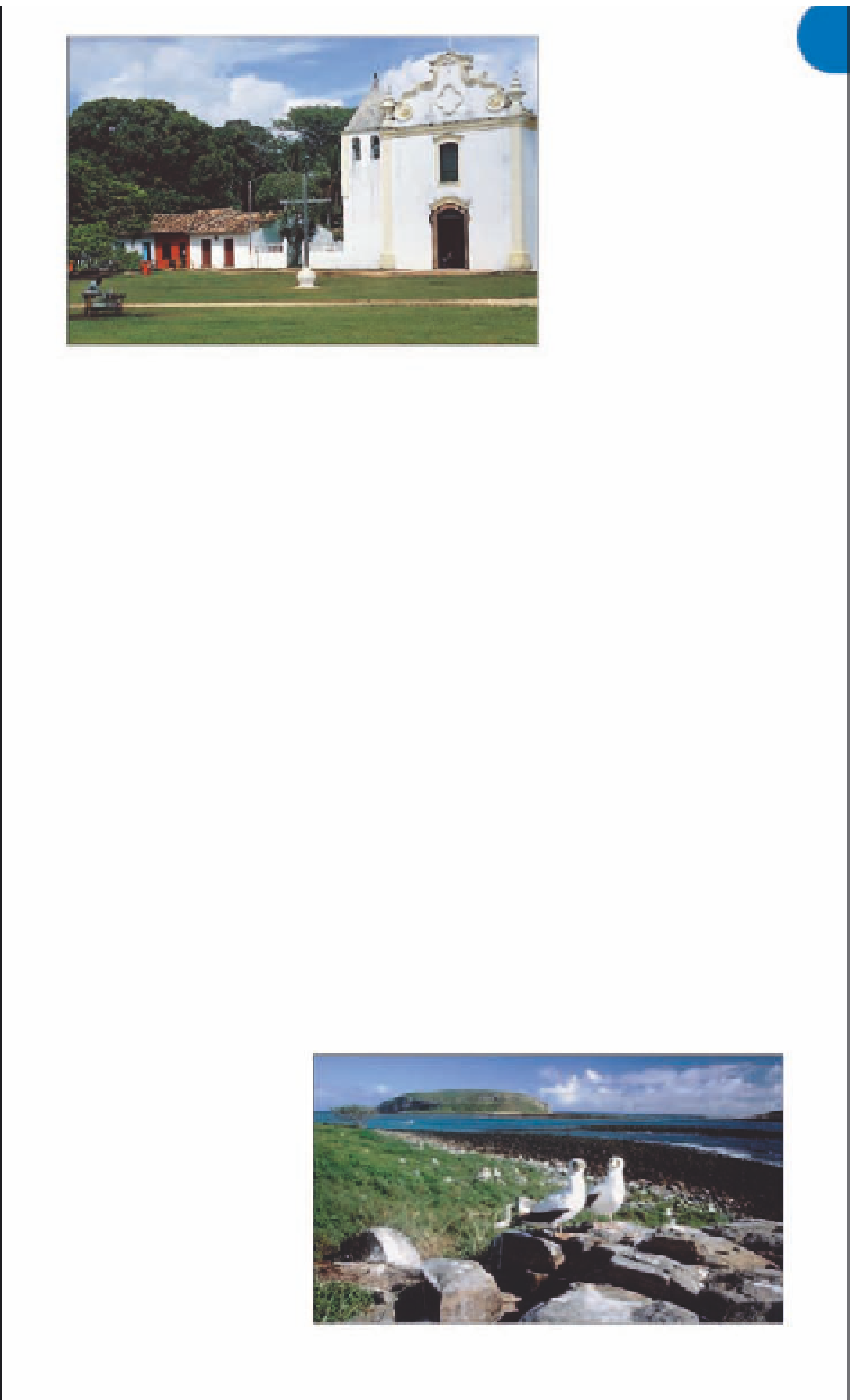Travel Reference
In-Depth Information
Parque Nacional
Marinho de
Abrolhos
w
g
n
Ibama, Praia do Kitongo,
Caravelas, (073) 3297 1111.
www
.ilhasdeabrolhos.com.br
Remote and uninhabited,
the archipelago of Abrolhos,
discovered by Amerigo
Vespucci in 1503, offers
excellent opportunities for
viewing wildlife. The five
islands are located off the
coast of southern Bahia. In
1983, the islands, together
with 351 sq miles (909 sq km)
of surrounding ocean, were
declared a National Marine
Park, the first such park in
Brazil. Known for its rare
formations of south Atlantic
coral, the park teems with
sea turtles, squid, and a rich
assortment of fish. A variety
of bird species come to feed
and lay eggs on the islands,
which are otherwise dry and
covered in grasslands. The
best time for spotting hump-
back whales is between
July and November, when
the archipelago becomes
a calving ground for them.
Only one of the five
islands, Siriba, can actually
be visited. Guided tours to
the marine park should only
be made with an operator
accredited by Brazil's envi-
ronmental agency, IBAMA.
Visitors can also book a day
or overnight excursion to
the islands and surrounding
coral reefs from the town of
Caravelas
on the mainland.
For snorkeling and diving
enthusiasts, underwater
visibility is best between
January and March.
Main square and the Matriz Nossa Senhora da Pena, Porto Seguro
Porto Seguro
0
*
96,000.
~
@
n
Av Portugal,
Passarela do Alcool, Centro, (073)
3288 3708.
challenging, as distances are
long and the coastal highways
are in a state of disrepair.
E
Museu de Porto Seguro
Praça Pero Campos Tourinho s/n.
Tel
(073) 3288 5182.
#
9am-5pm daily.
Porto Seguro (Safe Port) is
officially recognized as the
site of the first Portuguese
landing in 1500, w
h
ere Pedro
Cabral and his fleet arrived
and said mass on Brazilian
soil. The city's small historic
center (Cidade Histórica) has
several stately old buildings,
including the
Matriz Nossa
Senhora da Pena
, built in
1535. Its altar has an image of
Saint Francis of Assisi, which
was the first religious statue
to be brought to Brazil in
1503. On the same square, the
former jail built in 1772 is now
home to the
Museu de Porto
Seguro
, which holds a small
collection describing the early
colonization of the region.
Today, Porto Seguro is best
known for its buzzing night-
life, beach parties, music
festivals, and the notorious
“Passarela do Alcool” (alcohol
boardwalk), the nickname for
the city's main street where
vendors set up kiosks selling
fresh fruit cocktails with a
heavy alcoholic kick. Visitors
looking for a more tranquil
holiday experience usually
head farther south to the
lovely neighboring villages of
Arraial d'Ajuda
and Trancoso.
South of town are a few
beaches that mainly attract
backpackers. Less developed,
but serene, these beaches can
be accessed from Porto Seguro
airport, which receives daily
flights from all over Brazil.
Road access can often be
Trancoso
q
~
Porto Seguro, then bus.
@
Though just a short drive
from Porto Seguro, Trancoso
has a sense of tranquility
that sets it apart from the
nearby party town. Set on
a high bluff overlooking
the ocean, the town center
or
quadrado
is a long, grassy
space, anchored by a small
church and framed by houses,
many of which have turned
their gardens into tasteful
little cafés. Trancoso offers
sophisticated services
focusing on high-end travelers
- upscale B&Bs, fine dining,
and music. The beaches are
backed by red sandstone
cliffs, and remain largely
secluded and unspoiled.
Birds nesting on Siriba island, Parque Nacional Marinho de Abrolhos
Crystal-blue water of Poço Azul (Blue Pool), Chapada Diamantina







































